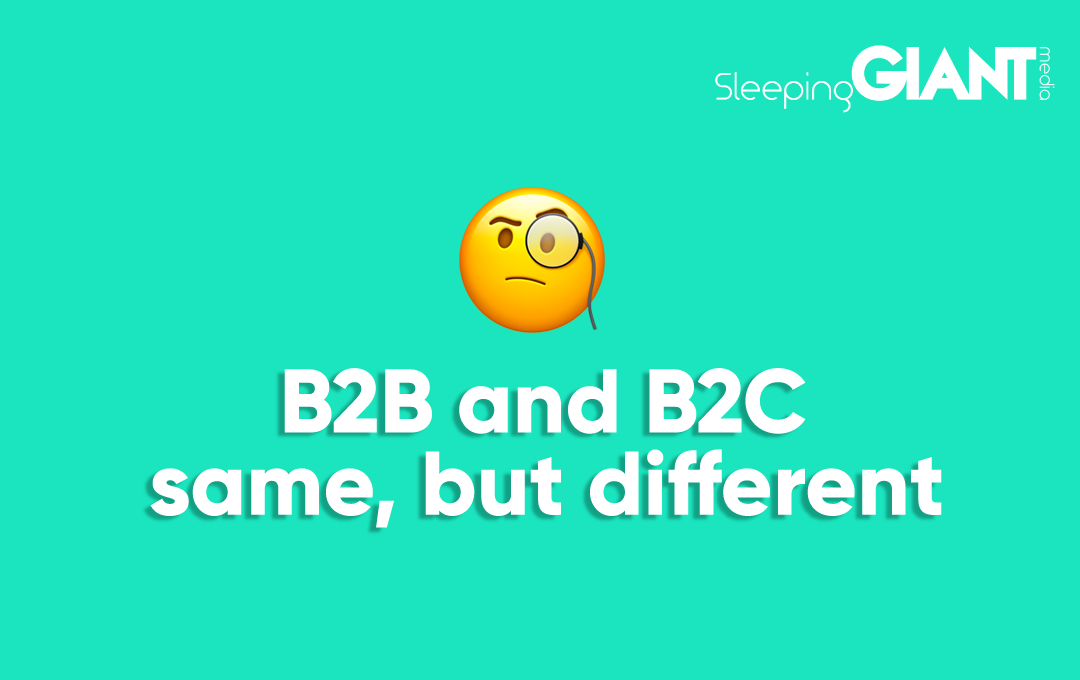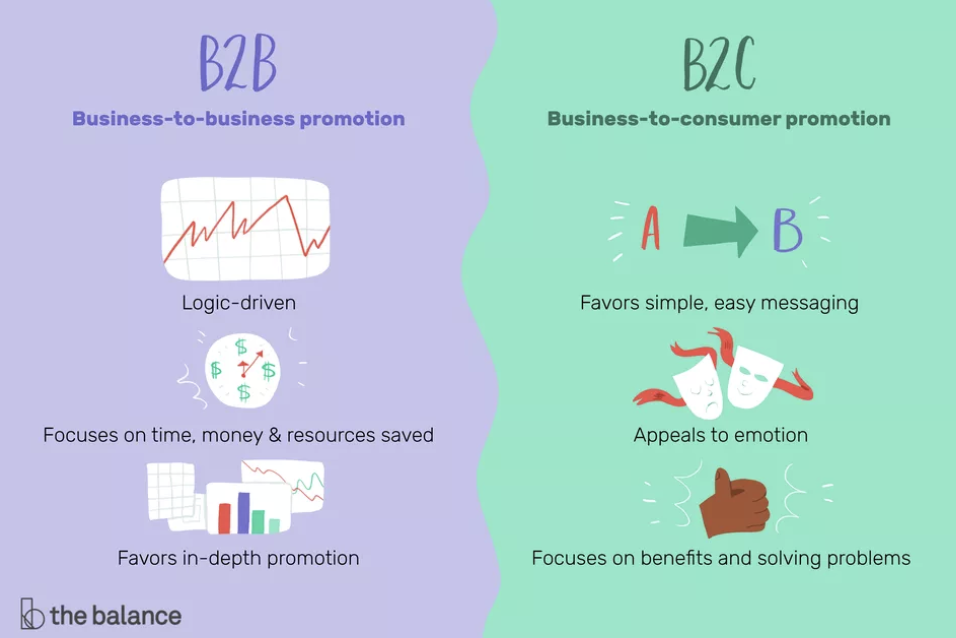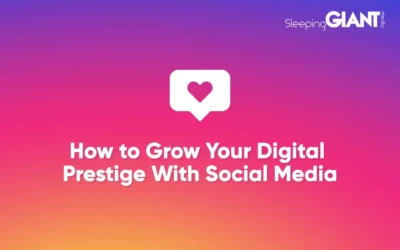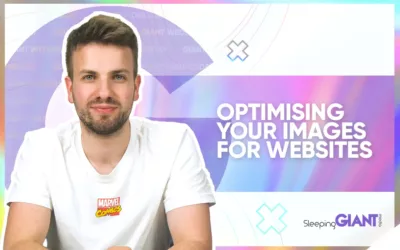
There’s less difference between B2B & B2C marketing than you think
Business and consumers are direct opposites, right? One produces, the other ‘consumes’. One provides, the other is provided for. So marketing to businesses should be vastly different than marketing to consumers, right?
Well, no. The difference that we’re led to believe is much smaller. Before I address this though, we should start with the basics: what is B2B and B2C marketing?
B2B marketing stands for business-to-business marketing, while B2C stands for business-to-consumer.
What are the differences between B2B & B2C?
Speaking broadly, B2B marketing tends to centre on proving a return-on-investment for a product or service. B2C marketing, on the other hand, tends to centre on making a product or service desirable in some way.
Marketing literature tends to distinguish between the two as having deep divides. With B2B focusing on logic & money, and B2C focusing on simplicity and emotion.
This infographic from The Balance seems to neatly present the divide.
And yet another industry site claims that the ‘thought process and decision making for choosing a romantic cruise will likely be very different than if you’re making a purchasing decision for your business. There is, after all, not a whole lot romantic about invoicing software…’
What’s the problem with this approach?
The fundamental problem with this approach is that it assumes that businesses are faceless, heartless blobs that tick along on line graphs while consumers are idiots who only buy sparkly things.
This may be true of some businesses and some consumers, but it’s a bad general assumption to make when developing marketing campaigns because it reduces your target audience to something to which they never are: simple.
While someone may not be locking eyes with invoicing software over a candle-lit, three-course dinner table, Dan from finance may be thinking about how he could be spending the extra time saved from manually filling out invoices.
Businesses are made of people, consumers are (made of) people
The choice to buy a product or service always falls on a person or group of people. So talk to them as if they’re people.
These decision-makers will always have their own pain points, their individual worries, fears, knowledge base, and confidence. Their role in their particular business reflects their interest in the business doing well. So your marketing should focus on what pain points these people will have, and how you can improve their working life.
A particular piece of software may be much cheaper than competitors’, but if it is difficult to operate due to a poor UI then the decision-makers aren’t going to care if it’s cheaper. They’ll likely be smart enough to figure that time-wasting software costs the business in the long run through reduced productivity.
The same goes for B2C marketing. If you’re trying to market, say, a personal finance app that helps people save money, then its low price may be a compelling selling point – but it’s unlikely to be as compelling as what they could do with that money.
But there must be some differences?
Okay, yes, there are some differences. The buyer journey for a B2B sale is likely to be much longer than one for a B2C sale – and B2B sales are much less likely to be made on impulse.
But this is usually due to the differences in cost, not necessarily because of a fundamental difference in approach. Take two typically consumer products with varying costs: a can of Coca Cola, and a luxury yacht.
The buyer journey for the yacht is likely to be quite a lengthy process, involving a lot of research into different types of yachts and the benefits of #YachtLife. The journey for a can of Coca Cola is as short as crossing the street to get to the nearest shop.
As such, the lead nurturing process for someone looking to buy a yacht (or any other high-ticket product, for that matter), is likely to be just as long, multifaceted, and complex as the lead nurturing process for costly accounting software.
Figure out what motivates people
Whether you’re developing a campaign for a B2B or B2C audience, you need to first establish what it is that motivates them to make the type of purchasing decision you want them to make.
Often, this will help you make certain assumptions with your tone and vocabulary.
If you’re selling a computer to a graphics professional or serious gamer, they’ll already be aware of the direct benefits of your mountains of RAM and 16-core processors. But that doesn’t mean you should focus your copy only on the technicals. Use the technical aspects to your advantage; for example, consider something like:
“Render render times out of your scene.”
or
“Lag? What’s lag?”
This is still emotional language, but it includes technical terminology that you could assume your target audience is aware of. What’s important is that it gets at what these prospects hate. Namely, having to wait for projects to render, or computers slowing down while working.
Every prospect will have pain points like these. Nail how you talk about them and people will listen to what else you have to say.
So, that’s why the difference between B2B and B2C is actually quite minimal when you break it down.
Consider your audience, consider that they are people and consider the customer journey.
And if you need any help with either of that, then please do get in touch – we’ve got plenty of experience across B2B and B2C brands.
Need help with your B2B or B2C digital marketing?
Get in touch and let us know you read this blog. Someone will get back to you in a jiffy.
Blog
How to Grow Your Digital Prestige With Social Media
Louis Vuitton currently reigns supreme among the luxury goods brands on social...
Giant Wednesday
How To Optimise Images For Websites
Digital Marketing, technology & business insights, how-to's and explainer...
Follow Us
Sign Up For More
Stay up to date with the latest happenings, learnings, events & more with our GIANT Newsletters.
Contact Us
Top Floor, The Civic Centre, Castle Hill Avenue, Folkestone CT20 2QY.
Copyright © 2022 Sleeping Giant Media. All Rights Reserved.



